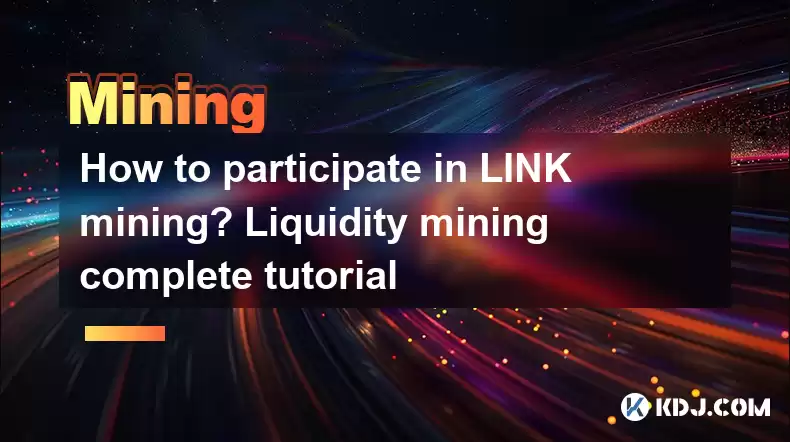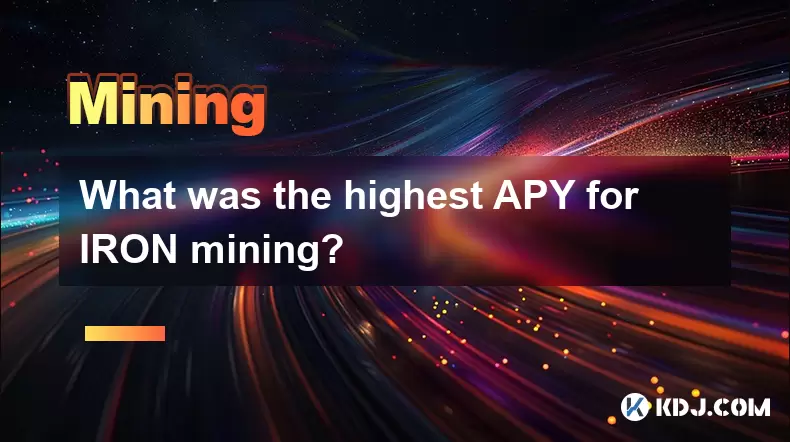-
 Bitcoin
Bitcoin $112400
-1.07% -
 Ethereum
Ethereum $3409
-3.27% -
 XRP
XRP $2.784
-6.60% -
 Tether USDt
Tether USDt $0.9997
-0.03% -
 BNB
BNB $739.3
-2.09% -
 Solana
Solana $158.0
-2.90% -
 USDC
USDC $0.9998
-0.02% -
 TRON
TRON $0.3213
-0.94% -
 Dogecoin
Dogecoin $0.1929
-5.01% -
 Cardano
Cardano $0.6974
-2.82% -
 Hyperliquid
Hyperliquid $36.69
-2.31% -
 Sui
Sui $3.327
-4.80% -
 Stellar
Stellar $0.3672
-5.18% -
 Chainlink
Chainlink $15.65
-3.07% -
 Bitcoin Cash
Bitcoin Cash $525.0
-1.68% -
 Hedera
Hedera $0.2291
-6.00% -
 Avalanche
Avalanche $20.91
-2.96% -
 Ethena USDe
Ethena USDe $1.000
0.00% -
 Toncoin
Toncoin $3.520
-1.12% -
 UNUS SED LEO
UNUS SED LEO $8.968
0.14% -
 Litecoin
Litecoin $105.7
0.26% -
 Shiba Inu
Shiba Inu $0.00001181
-1.79% -
 Polkadot
Polkadot $3.492
-2.08% -
 Uniswap
Uniswap $8.800
-3.10% -
 Dai
Dai $0.9999
-0.01% -
 Monero
Monero $289.9
-3.17% -
 Bitget Token
Bitget Token $4.243
-1.27% -
 Pepe
Pepe $0.00001006
-3.67% -
 Cronos
Cronos $0.1248
-5.68% -
 Aave
Aave $249.7
-2.50%
How to participate in LINK mining? Liquidity mining complete tutorial
Participating in LINK liquidity mining involves adding tokens to DeFi platforms like Uniswap or Sushiswap to earn rewards, but it comes with risks like impermanent loss.
Apr 28, 2025 at 07:00 pm

Participating in LINK mining, also known as liquidity mining with Chainlink (LINK), involves providing liquidity to decentralized finance (DeFi) platforms that support LINK tokens. This process can be rewarding but also comes with risks and complexities. This tutorial will guide you through the entire process of participating in LINK liquidity mining, from understanding the basics to executing the necessary steps.
Understanding LINK Liquidity Mining
Liquidity mining with LINK involves adding your LINK tokens to liquidity pools on DeFi platforms. These platforms use your tokens to facilitate trading and other financial activities, and in return, you earn rewards, often in the form of the platform's native token or additional LINK tokens. The rewards are distributed based on the amount of liquidity you provide and the duration you keep your tokens in the pool.
To participate effectively, you need to understand the concept of Automated Market Makers (AMMs), which are the backbone of many DeFi platforms. AMMs use algorithms to set prices and manage liquidity, and they rely on users like you to provide the necessary tokens.
Choosing a DeFi Platform
Before you can start mining LINK, you need to select a DeFi platform that supports LINK liquidity pools. Some popular platforms include Uniswap, Sushiswap, and Curve Finance. Each platform has its own set of rules, fees, and reward structures, so it's crucial to research and compare them.
- Uniswap: Known for its simplicity and wide range of supported tokens, Uniswap is a good starting point for beginners.
- Sushiswap: Offers additional features like yield farming and governance, which can enhance your rewards.
- Curve Finance: Specializes in stablecoin trading but also supports LINK pools, offering potentially higher rewards for stablecoin-LINK pairs.
Preparing Your Wallet
To interact with DeFi platforms, you'll need a compatible wallet that supports Ethereum and LINK tokens. Popular choices include MetaMask, Trust Wallet, and Ledger. Here's how to set up MetaMask, one of the most widely used wallets:
- Visit the MetaMask website and download the extension for your browser or the mobile app.
- Create a new wallet or import an existing one using your seed phrase.
- Set a strong password and agree to the terms of service.
- Once your wallet is set up, you'll need to add the Ethereum network and import your LINK tokens. Click on "Add Token," search for LINK, and add it to your wallet.
Adding Liquidity to a Pool
Once you have chosen a platform and set up your wallet, you can start adding liquidity to a LINK pool. Here's a step-by-step guide using Uniswap as an example:
- Connect your wallet to Uniswap by clicking on "Connect Wallet" and selecting your wallet provider.
- Navigate to the "Pool" section and click on "Add Liquidity."
- Select the LINK token and the token you want to pair it with (e.g., ETH or USDT).
- Enter the amount of LINK and the paired token you want to add to the pool. The interface will automatically calculate the required amount of the paired token based on the current pool ratio.
- Review the transaction details, including the amount of liquidity tokens you will receive and any fees.
- Confirm the transaction in your wallet and wait for it to be processed on the blockchain.
Managing Your Liquidity Position
After adding liquidity, you'll receive liquidity provider (LP) tokens that represent your share in the pool. You can manage your position by:
- Staking LP Tokens: Some platforms allow you to stake your LP tokens in additional pools to earn more rewards.
- Monitoring Your Position: Keep an eye on the pool's performance, as the value of your LP tokens can fluctuate based on trading volume and price changes.
- Withdrawing Liquidity: If you decide to exit the pool, you can return your LP tokens to the platform and receive your original tokens plus any accrued rewards.
Understanding Risks and Impermanent Loss
Participating in LINK liquidity mining comes with several risks, the most significant being impermanent loss. This occurs when the price of the tokens in the pool changes after you've added liquidity, resulting in a potential loss compared to simply holding the tokens.
To mitigate these risks:
- Diversify: Spread your liquidity across multiple pools and platforms to reduce the impact of price volatility.
- Monitor: Regularly check the performance of your pools and be prepared to adjust your positions as needed.
- Understand the Platform: Each platform has its own risk profile, so make sure you understand the specifics before committing your tokens.
FAQs
Q: Can I participate in LINK liquidity mining with a small amount of tokens?
A: Yes, you can participate with any amount of LINK tokens, though the rewards will be proportional to the size of your contribution. Starting small can be a good way to familiarize yourself with the process before committing larger amounts.
Q: How often are rewards distributed in LINK liquidity mining?
A: The frequency of reward distribution varies by platform. Some platforms distribute rewards continuously, while others do so at set intervals, such as daily or weekly. Always check the specifics of the platform you're using.
Q: Is it possible to lose my initial investment in LINK liquidity mining?
A: Yes, there is a risk of losing your initial investment due to impermanent loss or platform-specific risks. Always be aware of the potential downsides and manage your investments accordingly.
Q: Can I use hardware wallets for LINK liquidity mining?
A: Yes, you can use hardware wallets like Ledger or Trezor to participate in LINK liquidity mining. These devices provide an extra layer of security by keeping your private keys offline. You'll need to connect your hardware wallet to a compatible software wallet like MetaMask to interact with DeFi platforms.
Disclaimer:info@kdj.com
The information provided is not trading advice. kdj.com does not assume any responsibility for any investments made based on the information provided in this article. Cryptocurrencies are highly volatile and it is highly recommended that you invest with caution after thorough research!
If you believe that the content used on this website infringes your copyright, please contact us immediately (info@kdj.com) and we will delete it promptly.
- Grayscale, Altcoin Trust, and Mid-Cap Mania: What's the Deal?
- 2025-08-03 08:50:16
- XRP, ADA, and the Altcoin Evolution: What's Hot and What's Next
- 2025-08-03 08:30:16
- HBAR Price Check: Will Monthly Gains Hold at This Resistance Level?
- 2025-08-03 08:30:16
- Bitcoin, Cryptos, and Retirees: A New Era of Investment?
- 2025-08-03 08:50:16
- BlockDAG's Presale Power & Active Miners: A New York Minute on Crypto's Hottest Trend
- 2025-08-03 08:55:25
- BlockDAG Presale Heats Up: SUBBD Trails as Innovation Meets Execution
- 2025-08-03 09:00:16
Related knowledge

What was the highest APY for IRON mining?
Jul 23,2025 at 05:14am
Understanding IRON Token and Its Mining MechanismThe IRON token is a stablecoin that operates within the Iron Finance ecosystem, primarily on blockcha...

What is impermanent loss in IRON pools?
Jul 23,2025 at 09:00am
Understanding Impermanent Loss in the Context of IRON PoolsImpermanent loss is a phenomenon that affects liquidity providers in decentralized finance ...

How to claim rewards from IRON mining?
Jul 23,2025 at 02:21pm
Understanding IRON Mining and Reward MechanismsIRON Finance operated as a decentralized finance (DeFi) protocol on the Polygon and Binance Smart Chain...

How to claim rewards from IRON mining?
Jul 29,2025 at 05:07am
Understanding IRON Mining and Reward MechanismIRON is a dual-token system designed to stabilize the value of a synthetic asset through a combination o...

IRON mining tutorial for beginners
Jul 27,2025 at 12:01am
What Is IRON and How Does It Work in the Cryptocurrency Ecosystem?IRON is a cryptocurrency token that operates on the Binance Smart Chain (BSC) and is...

How to calculate APY for IRON mining?
Jul 28,2025 at 09:49am
Understanding APY in the Context of IRON Token MiningWhen engaging in IRON token mining within decentralized finance (DeFi) platforms, Annual Percenta...

What was the highest APY for IRON mining?
Jul 23,2025 at 05:14am
Understanding IRON Token and Its Mining MechanismThe IRON token is a stablecoin that operates within the Iron Finance ecosystem, primarily on blockcha...

What is impermanent loss in IRON pools?
Jul 23,2025 at 09:00am
Understanding Impermanent Loss in the Context of IRON PoolsImpermanent loss is a phenomenon that affects liquidity providers in decentralized finance ...

How to claim rewards from IRON mining?
Jul 23,2025 at 02:21pm
Understanding IRON Mining and Reward MechanismsIRON Finance operated as a decentralized finance (DeFi) protocol on the Polygon and Binance Smart Chain...

How to claim rewards from IRON mining?
Jul 29,2025 at 05:07am
Understanding IRON Mining and Reward MechanismIRON is a dual-token system designed to stabilize the value of a synthetic asset through a combination o...

IRON mining tutorial for beginners
Jul 27,2025 at 12:01am
What Is IRON and How Does It Work in the Cryptocurrency Ecosystem?IRON is a cryptocurrency token that operates on the Binance Smart Chain (BSC) and is...

How to calculate APY for IRON mining?
Jul 28,2025 at 09:49am
Understanding APY in the Context of IRON Token MiningWhen engaging in IRON token mining within decentralized finance (DeFi) platforms, Annual Percenta...
See all articles

























































































